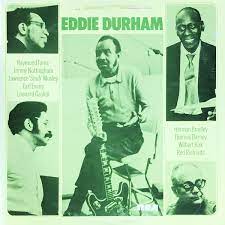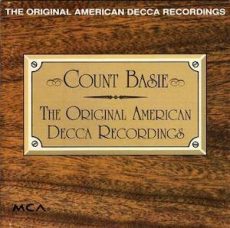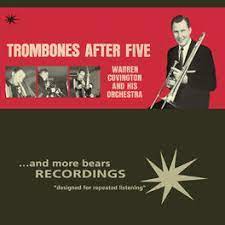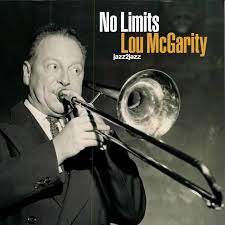
Daily Dose Of Jazz…
Edward Durham was born on August 19, 1906 in San Marcos, Texas to Joseph Durham, Sr., and Luella Rabb Durham. From an early age he performed with his family in the Durham Brothers Band. At the age of eighteen, he began traveling and playing in regional bands.
From 1929 Eddie started experimenting to enhance the sound of his guitar using resonators and megaphones. In 1935 he was the first to record an electrically amplified guitar with Jimmie Lunceford in Hittin’ the Bottle that was recorded in New York for Decca.
In 1938, Durham wrote I Don’t Want To Set The World On Fire with Bennie Benjamin, Sol Marcus, and Eddie Seiler. During the 1940s he created Eddie Durham’s All-Star Girl Orchestra, an all black female swing band that toured the United States and Canada.
That same year Eddie recorded single string electric guitar solos with the Kansas City Five or Six, which were both smallish groups that included members of Count Basie’s rhythm section along with the tenor saxophone playing of Lester Young. The orchestras of Bennie Moten, Jimmie Lunceford, Count Basie and Glenn Miller took great benefit from his composing and arranging skill.
Guitarist, trombonist, composer and arranger Eddie Durham, who was one of the pioneers of the electric guitar in jazz, transitioned on March 6, 1987.
More Posts: arranger,guitar,history,instrumental,jazz,music,trombone

Daily Dose Of Jazz…
Dan “Slamfoot” Minor was born August 10, 1909 in Dallas, Texas, and played trombone for a local church orchestra in his teens before joining local band the Blue Moon Chasers. In 1927, his first major professional engagement was as a member of Walter Page’s Blue Devils.
In 1929 Minor joined the Blues Syncopaters led by Ben Smith, and during this period he also worked in bands led by Earl Dykes, Gene Coy, Lloyd Hunter and Alphonse Trent. By 1931 he joined the Bennie Moten band, remaining after Moten’s death in 1935, when its leadership was taken over by Count Basie, and stayed with the Basie orchestra until 1941. During that period he performed at the From Spirituals to Swing concerts in New York City in 1938 and 1939.
However, Dan tended to be overshadowed by other trombonists such as Benny Morton and Vic Dickenson, and rarely took solos. He joined the Buddy Johnson band in 1942, and also played around that time with Cab Calloway. He worked with Mercer Ellington in 1945, and also recorded and played with Lucky Millinder and Willie Bryant.
After the 1940s, through to the 1960s, he continued to perform occasionally on a freelance basis. Trombonist Dan Minor transitioned in New York City on April 11, 1982 at the age of 72.
More Posts: history,instrumental,jazz,music,trombone

Daily Dose Of Jazz…
Warren Covington was born on August 7, 1921 in Philadelphia, Pennsylvania and played with Isham Jones in 1939, then with Les Brown in 1945-46 and Gene Krupa in late 1946. Following this he became a staff musician for CBS radio.
By the end of the decade he was working with Ralph Flanagan and again in the mid Fifties. He played briefly with Tommy Dorsey but by 1956 he replaced Eddie Grady as leader of the Commanders, a Decca recording and touring band which lasted until the middle of 1957. Covington recorded two albums and one single with this band.
Post Tommy Dorsey’s sudden death in 1956, the band continued under the direction of Jimmy Dorsey. However, Tommy’s estate took back his arrangements and approached Warren to form a new Tommy Dorsey band, which he led, touring and recording for Decca, into 1961. Among his hits with the Dorsey band was Tea for Two Cha Cha, which sold over one million copies and was awarded a gold disc.
A player who also occasionally played, with a variety of the baritone horn, baritone and tenor saxophone, Covington participated in the big bands of Charles Mingus, Randy Weston, Bobby Hackett, and George Benson on recordings, and also a number of film soundtracks.
Big band trombonist Warren Covington, who was also an active session player, arranger and bandleder, transitioned on August 24, 1999 in New York.
More Posts: arranger,bandleader,history,instrumental,jazz,music,trombone

Daily Dose Of Jazz…
Lou McGarity was born Robert Louis McGarity on July 22, 1917 in Athens, Georgia. He started out playing violin when he was seven and didn’t switch to trombone until he was 17. He studied at the University of Georgia from 1934-36, gigged locally around the South and toured with Ben Bernie from 1938-40
He hit the big time with Benny Goodman from 1940-42, becoming the first trombonist to play both with the big band and his smaller groups. During the war years 1942-44 he worked with Raymond Scott’s Orchestra at CBS, and after military service teamed up with his friend and fellow trombonist Cutty Cutshall and rejoined Goodman in ‘46.
Lou was a busy studio musician in New York City beginning in 1947 while performing in clubs at night with Eddie Condon and playing Dixieland with the Lawson/Haggard band. He worked with Bob Crosby in the mid-’60s andwas a member of the World’s Greatest Jazz Band at the end of the 1960s. He recorded with Urbie Green, J.J. Johnson, Kenny Davern, Jimmy McPartland, Charlie Parker, Cootie Williams and Bobby Hackett among others.
Trombonist Lou McGarity, who recorded as a leader and played in the big band, swing and Dixieland genres until bad health shortened his life, transitioned on August 28, 1971 in Alexandria, Virginia.
More Posts: bandleader,history,instrumental,jazz,music,trombone

Daily Dose Of Jazz…
Frank Rehak was born July 6, 1926 in New York City and began on piano and cello before switching to trombone. He worked with Gil Evans and Miles Davis. He also appeared with Davis on the broadcast The Sounds of Miles Davis.
A heroin addiction combined with other financial problems led to his withdrawal from music and his lapsing into relative obscurity. It was probably partially contributed to his failed marriage to nightclub dancer Jerri Gray. In an effort to deal with these issues he spent time at Synanon, which led to his mention in Art Pepper’s autobiography.
Trombonist Frank Rehak transitioned in Badger, California on June 22, 1987 of throat cancer at the age of 60.
More Posts: history,instrumental,jazz,music,trombone



